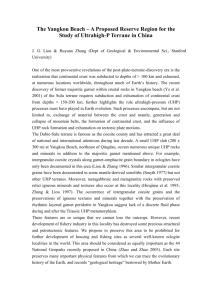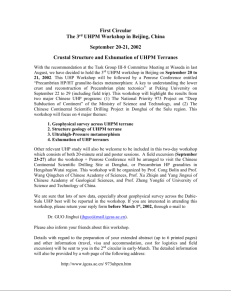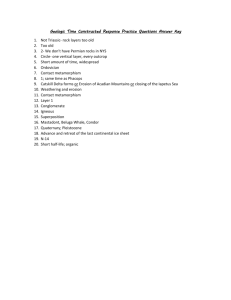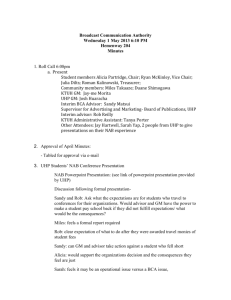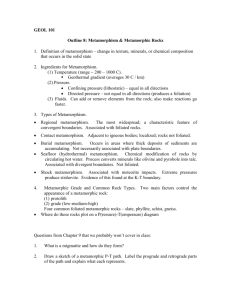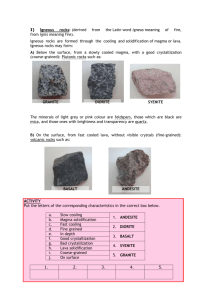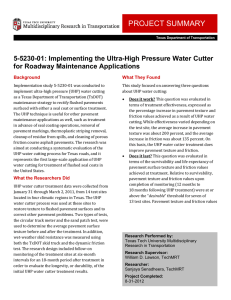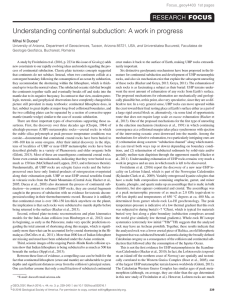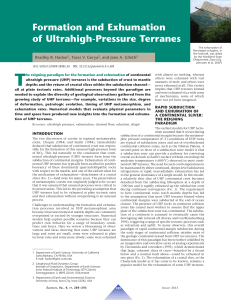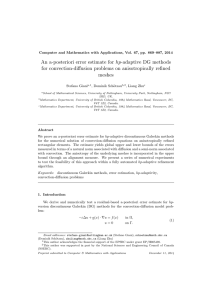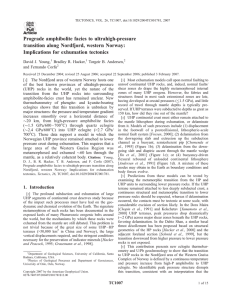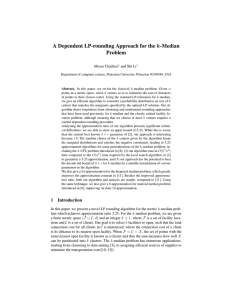Global UHP Metamorphism and Continental Subduction/Collision:
advertisement
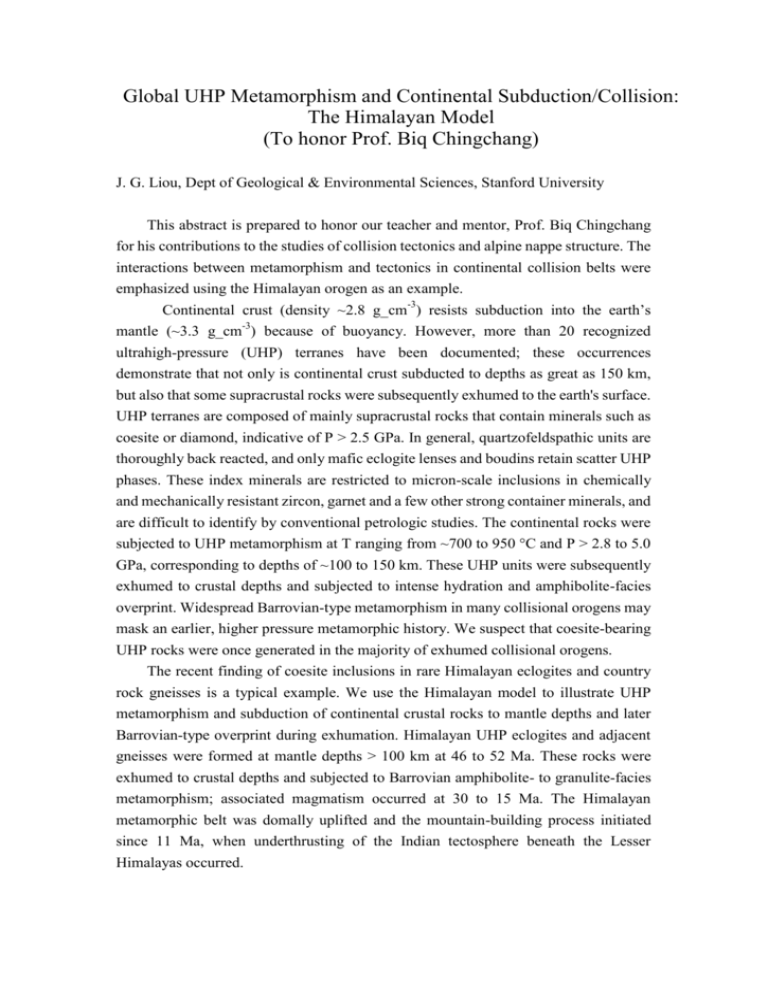
Global UHP Metamorphism and Continental Subduction/Collision: The Himalayan Model (To honor Prof. Biq Chingchang) J. G. Liou, Dept of Geological & Environmental Sciences, Stanford University This abstract is prepared to honor our teacher and mentor, Prof. Biq Chingchang for his contributions to the studies of collision tectonics and alpine nappe structure. The interactions between metamorphism and tectonics in continental collision belts were emphasized using the Himalayan orogen as an example. Continental crust (density ~2.8 g_cm-3) resists subduction into the earth’s mantle (~3.3 g_cm-3) because of buoyancy. However, more than 20 recognized ultrahigh-pressure (UHP) terranes have been documented; these occurrences demonstrate that not only is continental crust subducted to depths as great as 150 km, but also that some supracrustal rocks were subsequently exhumed to the earth's surface. UHP terranes are composed of mainly supracrustal rocks that contain minerals such as coesite or diamond, indicative of P > 2.5 GPa. In general, quartzofeldspathic units are thoroughly back reacted, and only mafic eclogite lenses and boudins retain scatter UHP phases. These index minerals are restricted to micron-scale inclusions in chemically and mechanically resistant zircon, garnet and a few other strong container minerals, and are difficult to identify by conventional petrologic studies. The continental rocks were subjected to UHP metamorphism at T ranging from ~700 to 950 °C and P > 2.8 to 5.0 GPa, corresponding to depths of ~100 to 150 km. These UHP units were subsequently exhumed to crustal depths and subjected to intense hydration and amphibolite-facies overprint. Widespread Barrovian-type metamorphism in many collisional orogens may mask an earlier, higher pressure metamorphic history. We suspect that coesite-bearing UHP rocks were once generated in the majority of exhumed collisional orogens. The recent finding of coesite inclusions in rare Himalayan eclogites and country rock gneisses is a typical example. We use the Himalayan model to illustrate UHP metamorphism and subduction of continental crustal rocks to mantle depths and later Barrovian-type overprint during exhumation. Himalayan UHP eclogites and adjacent gneisses were formed at mantle depths > 100 km at 46 to 52 Ma. These rocks were exhumed to crustal depths and subjected to Barrovian amphibolite- to granulite-facies metamorphism; associated magmatism occurred at 30 to 15 Ma. The Himalayan metamorphic belt was domally uplifted and the mountain-building process initiated since 11 Ma, when underthrusting of the Indian tectosphere beneath the Lesser Himalayas occurred.
